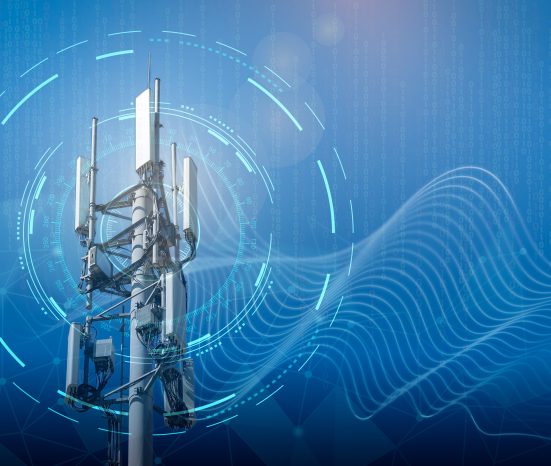Fifth Generation Cellular Communications (5G)
What is 5G?
5G stands for the fifth generation of wireless cellular communications technology. It’s the successor to 4G and provides faster connectivity for mobile devices.
Benefits of 5G
Speed and Bandwidth
- 5G networks offer higher download speeds, with a peak speed of 10 gigabits per second (Gbit/s) when there’s only one user in the network.
- The increased bandwidth allows 5G to deliver faster speeds than 4G, improving the quality of Internet services, especially in crowded areas.
Cellular Networks
- Like its predecessors, 5G networks are cellular networks. The service area is divided into small geographical areas called cells.
- All 5G wireless devices within a cell connect to the Internet and the telephone network via radio waves through a base station and antennas.
Applications and Connectivity
- 5G can connect more devices, making it suitable for the Internet of Things (IoT) and machine-to-machine communication.
- Due to its increased bandwidth, 5G networks may also compete with existing ISPs (such as cable internet) and enable new applications.
Standardization
- The industry consortium responsible for setting 5G standards is the 3rd Generation Partnership Project (3GPP).
- 5G uses 5G NR (New Radio) software, which defines the system’s parameters and features.
Frequency Bands
- Some network operators use millimetre waves (FR2) in 5G terminology for additional capacity and higher throughputs.
- Millimetre waves have a shorter range but provide more capacity. However, they face challenges passing through building walls and obstacles.
5G and the Aerospace Industry
Not surprisingly, therefore, 5G technology is poised to revolutionize the aerospace industry, offering significant benefits across various aspects of aviation. This is how it is making an impact:
In-Flight Connectivity (IFC)
- 5G enables faster and more reliable in-flight Wi-Fi. Passengers can enjoy seamless internet access, streaming, and communication during their flights.
- Companies like Gogo are leveraging 5G to enhance their IFC networks.
Mission-Critical Services
- The integration of 5G wireless communication technologies in aerospace aims to boost mission-critical services.
- Ultra-reliable, low-latency communication ensures critical data transfers and interconnected devices and systems.
Manufacturing Productivity
- Aerospace manufacturers are trialling 5G to transform productivity. By using 5G, they can:
- Maximize machine time.
- Assure accurate machining of parts with increased speed and efficiency.
- Eliminate the need for re-work or replacement of damaged components.
Aviation Operations
- Collins Aerospace provides 5G solutions that minimize service downtime, reduce impact on flight operations, and enhance safety.
Evolution of 5G

5G technology is set to evolve significantly in the coming years, promising faster speeds, lower latency, and greater reliability compared to its current capabilities. As telecommunications infrastructure continues to mature, widespread deployment of 5G networks will enable seamless connectivity across diverse environments, from urban centers to remote locations. Innovations such as network slicing and edge computing will optimize service delivery for various industries, supporting applications like autonomous vehicles, smart cities, and immersive augmented reality experiences. Moreover, advancements in 5G standards and technologies are expected to foster a robust ecosystem of interconnected devices, driving new levels of digital transformation and economic growth globally.
Aerospace & 5G in Future
As time progresses, the aerospace industry is poised to increasingly adopt 5G technology to enhance various aspects of aviation. 5G’s high-speed, low-latency connectivity will enable real-time data transmission crucial for improving in-flight communications, safety monitoring, and operational efficiency. From enabling seamless passenger connectivity and in-flight entertainment to optimizing maintenance processes through IoT integration, 5G holds the potential to revolutionize how aircraft are managed, ensuring safer and more efficient operations in the skies.

Frequently Asked Questions
Common questions and answers pertaining to 5G, especially in regards to aviation.
How does 5G benefit aviation?
5G enhances aviation by providing faster and more reliable communication networks, crucial for in-flight connectivity, real-time data transmission for aircraft systems, and enabling advanced applications like autonomous flight and predictive maintenance.
Does 5G improve aircraft safety?
Yes, 5G can improve aircraft safety by supporting real-time monitoring of critical systems, enabling faster communication between aircraft and ground control, and enhancing navigation accuracy through improved GPS and location-based services.
What challenges does 5G pose for aviation?
Challenges include ensuring seamless transition and compatibility with existing aviation communication systems, addressing potential interference issues, and maintaining high cybersecurity standards to protect sensitive aviation data transmitted over 5G networks.
Is 5G deployment widespread across airports and airspace?
Deployment of 5G in airports and airspace varies globally. While some regions and airports have begun implementing 5G infrastructure for ground operations and passenger services, comprehensive deployment across all aviation operations worldwide is still in progress.
How does 5G contribute to the future of air traffic management (ATM)?
5G can enhance air traffic management by improving communication between air traffic controllers, pilots, and ground operations, facilitating more efficient routing and reducing congestion in busy airspace. It also supports the integration of unmanned aerial vehicles (drones) into controlled airspace, enhancing overall safety and operational efficiency.
Video Explanation
The video below will provide more information as to how this technology works
Example Industry User

Collins Aerospace is leveraging 5G technology to enhance various aspects of aviation operations and services. By integrating 5G, the company aims to improve in-flight connectivity, providing passengers with faster and more reliable internet access. Additionally, 5G’s low latency and high-speed capabilities are utilized for mission-critical applications, enabling real-time data transfer and enhanced communication between aircraft and ground systems. This technological advancement supports more efficient maintenance operations, optimized flight paths, and improved overall safety in the aerospace industry.
Further Resources
Below are some links to further reading material.

